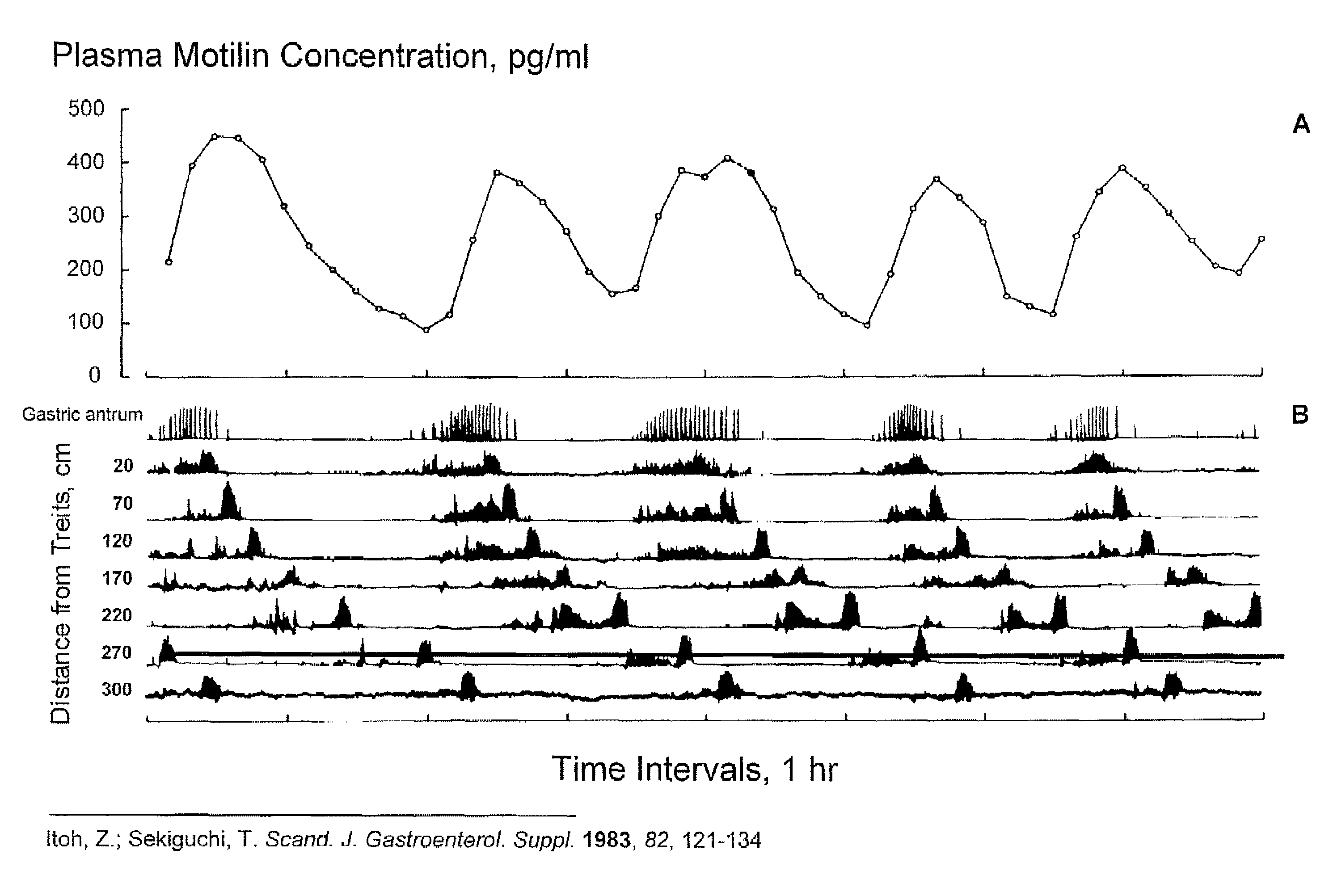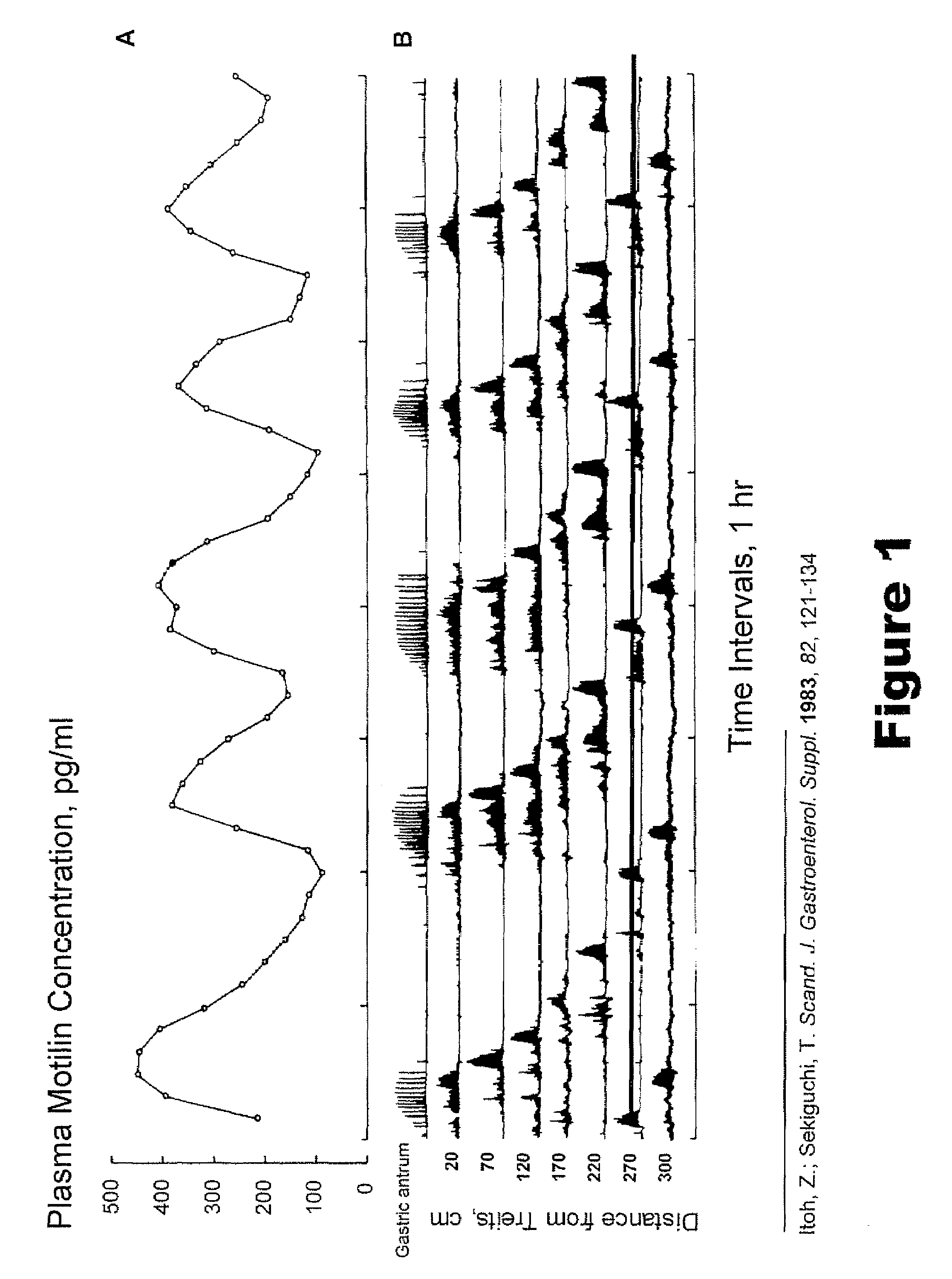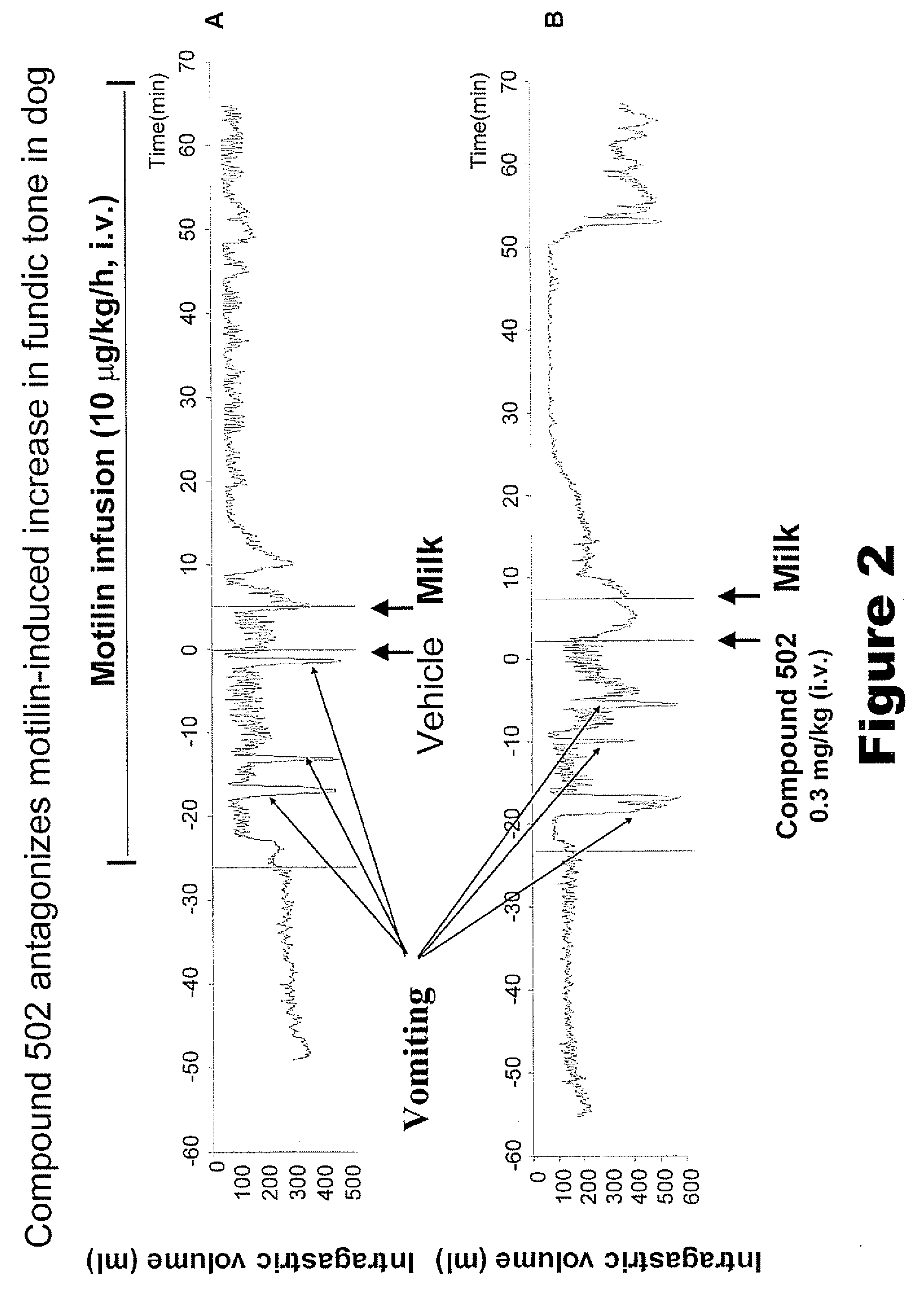Macrocyclic antagonists of the motilin receptor for modulation of the migrating motor complex
a technology of motilin receptor and macrocyclic antagonist, which is applied in the direction of peptides/protein ingredients, drug compositions, peptides, etc., can solve the problems of limited duration, ineffective current treatment of these conditions in many cases, and no effective therapy for this damage nor for the associated diarrhea
- Summary
- Abstract
- Description
- Claims
- Application Information
AI Technical Summary
Benefits of technology
Problems solved by technology
Method used
Image
Examples
example 1
Effect of Compound 502 on the Migrating Motor Complex in Dogs
[0299]In the first series of experiments according to Method F (FIGS. 4 and 5), Compound 502 (1 mg / kg, i.v.) was observed to delay the migrating motor complex (MMC) in fasted beagle dogs N=6). This effect appears to be dose-dependent as data indicates a lesser delay of MMCs at a dose of 0.30 mg / kg (i.v.). This effect on the MMC may be relevant to IBS-diarrhea type (IBS-d) as these patients are known to have higher frequency and amplitude in MMCs. Alosetron (Lotronex™) is a serotonin (5-HT3) agonist currently available for restricted use for IBS-d that is also known to block the MMC in dog.
[0300]In the second series of experiments conducted according to Method F (FIGS. 6 and 7), Compound 502 (0.30 mg / kg, i.v.) was shown to briefly attenuate post-prandial activity in fed dogs. This observation is relevant to both IBS-d and functional dyspepsia (FD) since (1) IBS-d patients are known to have hyper-responsive gastrointestinal ...
example 2
Effect of Compound 502 on Fundic Accommodation in Dogs
[0302]Compound 502 (0.30 mg / kg, i.v.) antagonized the effects of exogenous motilin in the short period before the meal and further improved gastric accommodation in response to the meal (FIGS. 2 and 3). The brief improvement in gastric accommodation in response to Compound 502 may be due to the fact that it was administered by i.v. bolus whereas the motilin is being administered by continuous infusion through the duration of the experiment.
[0303]In response to a milk meal as described in Method E, Compound 502 (0.30 mg / kg, i.v.) antagonized the fundic contraction induced by infusion of exogenous motilin (0.010 mg / kg / h, i.v., FIG. 2); AUC of fundic relaxation (0-to-5 min.) for vehicle administration was 18.7±3.3 vs. 27.3±3.5 mL / h after compound 502 (n=4, p<0.05). Compound 502 further prevented this increase in a dose-dependent manner as shown in FIG. 3.
PUM
 Login to View More
Login to View More Abstract
Description
Claims
Application Information
 Login to View More
Login to View More - R&D
- Intellectual Property
- Life Sciences
- Materials
- Tech Scout
- Unparalleled Data Quality
- Higher Quality Content
- 60% Fewer Hallucinations
Browse by: Latest US Patents, China's latest patents, Technical Efficacy Thesaurus, Application Domain, Technology Topic, Popular Technical Reports.
© 2025 PatSnap. All rights reserved.Legal|Privacy policy|Modern Slavery Act Transparency Statement|Sitemap|About US| Contact US: help@patsnap.com



